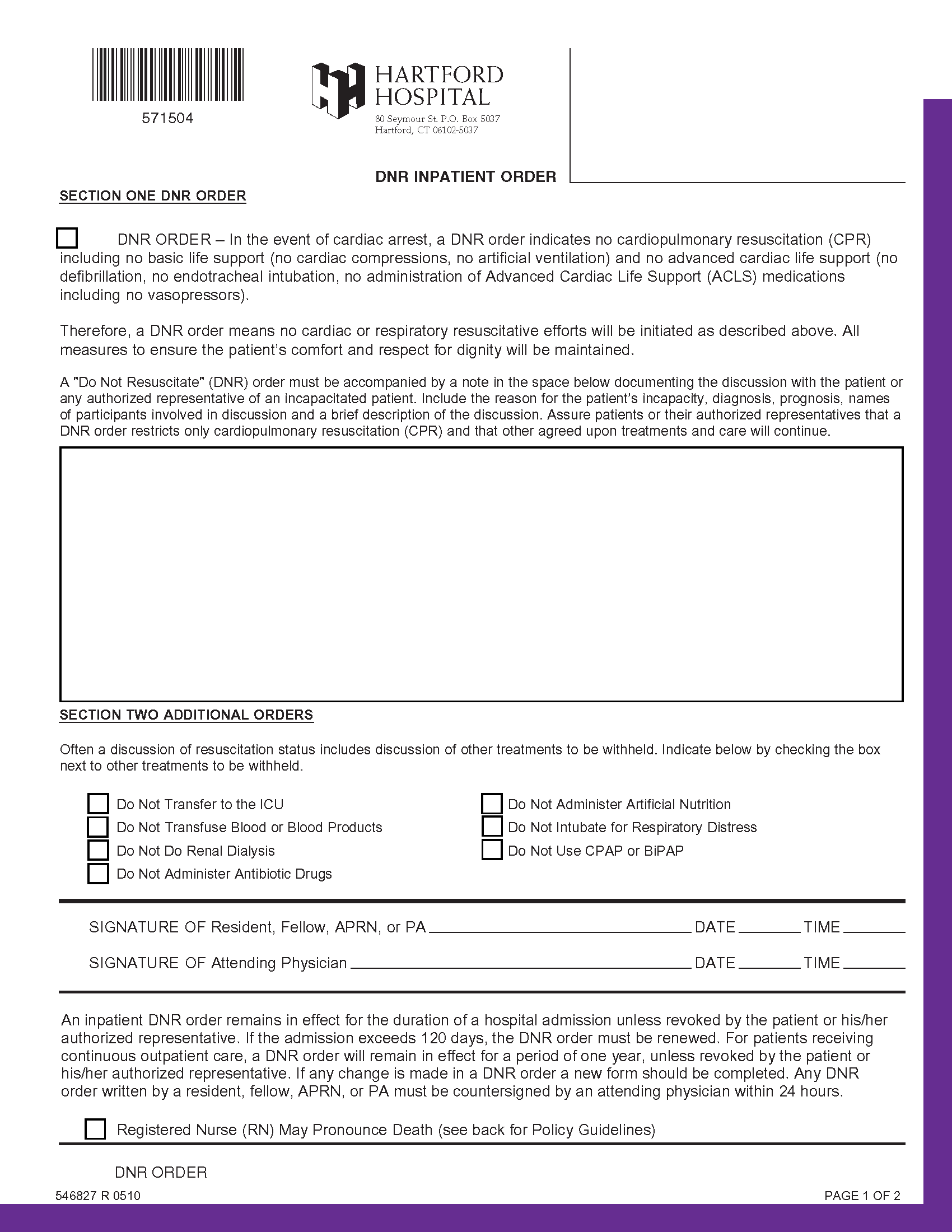Signing Requirements
The patient’s physician or an APRN must sign the DNR form.[1]
The physician must discuss the consequences of the DNR with the patient or, if the patient is incapacitated, their authorized representative (health care agent, guardian, attorney-in-fact, etc.).
Department of Health
Transfers
In Connecticut, DNR forms are provided by health care facilities, as there is no state-wide form. If the patient is being transferred between facilities, the official Department of Health Transfer of Do Not Resuscitate Order must be completed and sent with the transferred patient.
Identifiers
A DNR bracelet is the only valid identifier for patients with an existing DNR order.[2] These are offered in metal or plastic and must be ordered by the patient’s attending physician.

